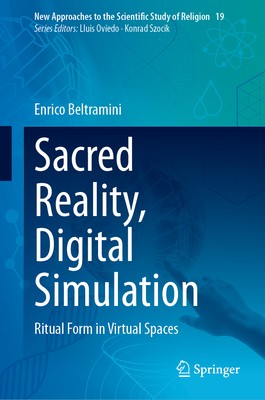
- We will send in 10–14 business days.
- Author: Enrico Beltramini
- Publisher: Springer
- ISBN-10: 3031930452
- ISBN-13: 9783031930454
- Format: 15.6 x 23.4 x 1.3 cm, kieti viršeliai
- Language: English
- SAVE -10% with code: EXTRA
Reviews
Description
This study explores the relationship between the sacred and the virtual, emphasizing the sacred as a divinely dependent, consecrated space activated through ritual, mediating between the profane and the holy. The central argument is that the virtual is fundamentally incompatible with the ritual form--a concept developed by Romano Guardini and others, including Joseph Ratzinger--which holds that the sacred is not merely acknowledged but made present through ritualized actions that require tangible, participatory engagement. Even if the virtual realm were acknowledged as real and retained both the bodily presence of the faithful and the Divine Presence, the rite would still be ineffective. Virtuality prevents the proper enactment of the rite, rendering it ineffective. At its core, the ritual form is performative, embodied, and consecratory. It requires physical presence, material elements, and a structured sequence of gestures, symbols, and words that together make the divine encounter possible. Their absence in virtual spaces disrupts ritual form, compromising its sacramental function.
EXTRA 10 % discount with code: EXTRA
The promotion ends in 23d.07:52:47
The discount code is valid when purchasing from 10 €. Discounts do not stack.
- Author: Enrico Beltramini
- Publisher: Springer
- ISBN-10: 3031930452
- ISBN-13: 9783031930454
- Format: 15.6 x 23.4 x 1.3 cm, kieti viršeliai
- Language: English English
This study explores the relationship between the sacred and the virtual, emphasizing the sacred as a divinely dependent, consecrated space activated through ritual, mediating between the profane and the holy. The central argument is that the virtual is fundamentally incompatible with the ritual form--a concept developed by Romano Guardini and others, including Joseph Ratzinger--which holds that the sacred is not merely acknowledged but made present through ritualized actions that require tangible, participatory engagement. Even if the virtual realm were acknowledged as real and retained both the bodily presence of the faithful and the Divine Presence, the rite would still be ineffective. Virtuality prevents the proper enactment of the rite, rendering it ineffective. At its core, the ritual form is performative, embodied, and consecratory. It requires physical presence, material elements, and a structured sequence of gestures, symbols, and words that together make the divine encounter possible. Their absence in virtual spaces disrupts ritual form, compromising its sacramental function.


Reviews